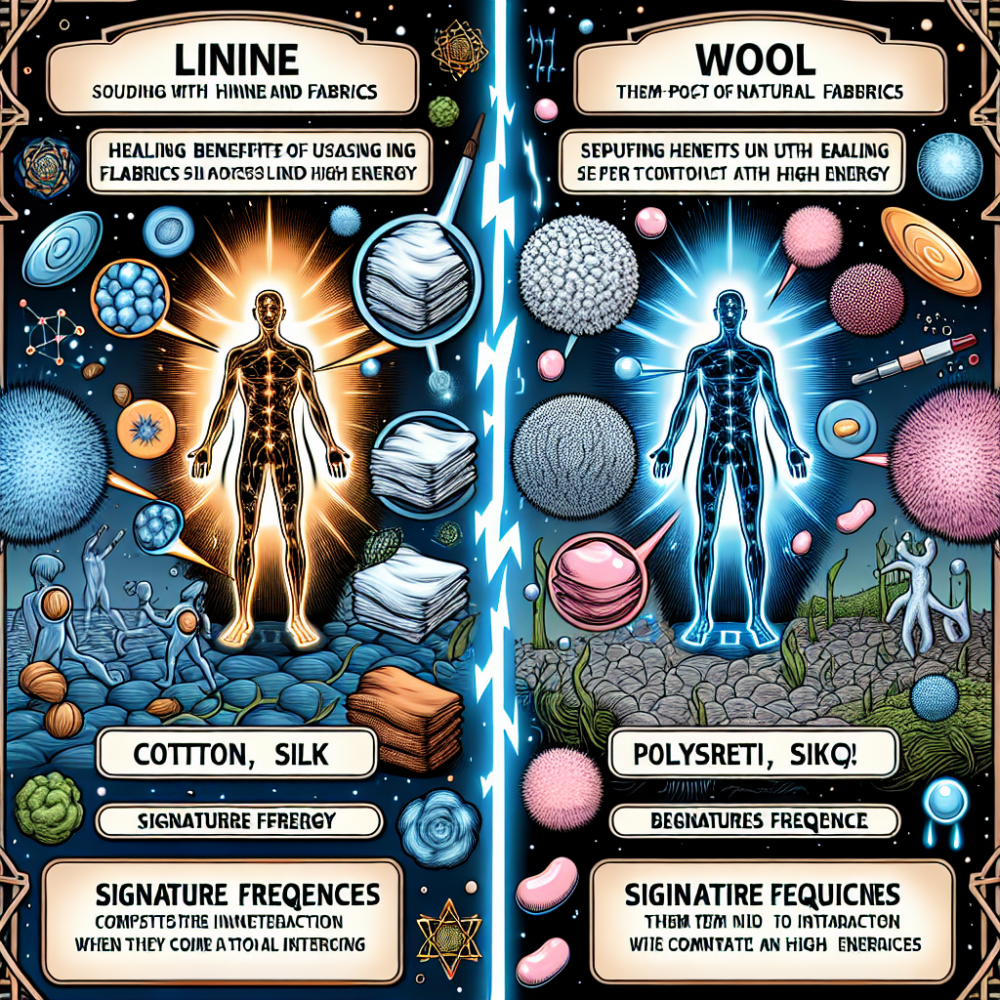The Benefits of Linen: A Biblical and Scientific Perspective
Linen, derived from flax cells, has been found to have a remarkable compatibility with human cells, producing a positive effect on the human body. In fact, the human cell is capable of completely dissolving a flax cell. Interestingly, flax thread is the only natural material used for internal sutures in surgical settings.
Scientists have discovered that linen fibers reflect light, and the light energy aspect of living organisms has been measured by many researchers. Dr. Ottawa Berry, a Nobel Prize winner, identified the signature frequency numbers of the average human to be between 70 and 90. Results below 50 were identified as the signature frequency of chronic disease, while numbers below 15 were associated with incurable conditions like cancer.

Comparing Linen to Other Fabrics
When measuring the signature energy output, linen fabric measures an impressive 5000 units. In comparison:
– 🌿 Plant fibers like cotton and hemp are not considered healing fibers
– 🌾 Standard bleached and colored cotton measures only 40 units of energy
– 🍃 Organic unbleached cotton measures 100 units, which is normal but not healing
– 🐛 Silk fabric, produced by an unclean insect, measures just 10 units of energy
– 🧪 Rayon measures a mere 15 signature frequency
– ❌ Polyester, acrylic, spandex, Lycra, viscose, and nylon measure 0 and do not reflect light
– 🐑 Pure wool, like linen, measures 5000 units of energy
The Biblical Recommendation
For those seeking wellness, the scriptures recommend wearing linen. This advice is supported by the scientific findings that highlight linen’s unique properties and its potential to promote health in the human body.
Interestingly, the Bible mentions linen as the fabric worn by priests and used in the tabernacle. In Exodus 28, God instructs Moses to make holy garments for Aaron, the high priest, using fine linen. The curtains of the tabernacle were also made of fine twisted linen (Exodus 26:1).
Linen is known for its durability, breathability, and moisture-wicking properties. It is also hypoallergenic and naturally resistant to bacteria and fungi, making it an ideal choice for those with sensitive skin or allergies.







